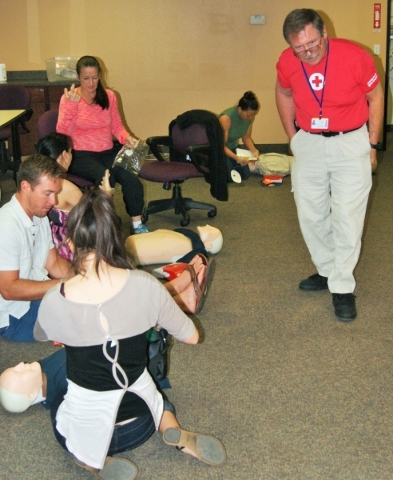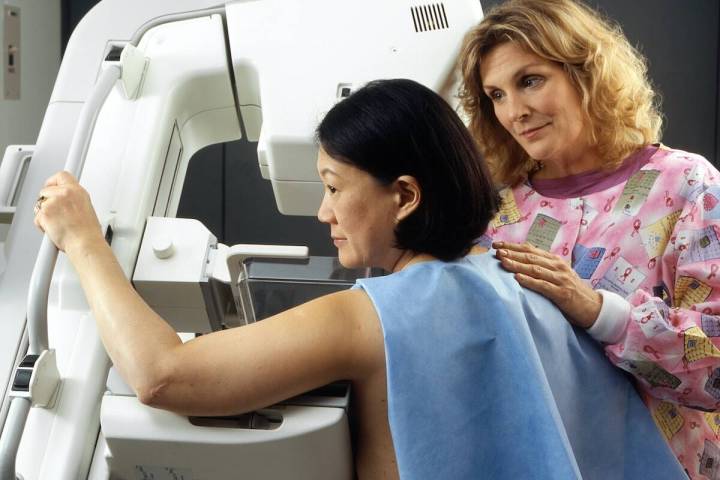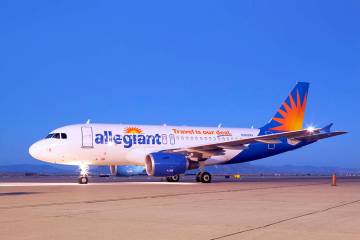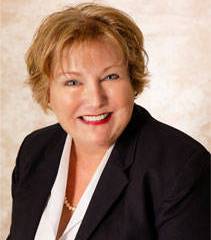
The American Red Cross has a wide array of offering for businesses.
Sure, you see the organization’s symbol at all types of disasters where staff members and volunteers lend a helping hand. But there’s a lot more to the organization.
There’s training. All kinds of it. CPR. First aid. There are courses on workplace safety and emergency planning, OSHA, certification for first responders.
It’s a pretty hefty menu.
There are even special discounts and program options that keep the cost down and reduce the amount of time employees are out of the office.
And the Red Cross bundles. Businesses can sign up for multiple services for a discount.
“A large number of our customers are businesses,” said Scott Emerson, regional CEO for the Southern Nevada chapter, based in Las Vegas. “Businesses send their employees to get trained. We also get calls from businesses for first aid kits and AEDs (automated external defibrillators).”
What’s more, if businesses see a need for special safety training for their employees or staff members, just ask.
Wilderness safety is an example of a program that found multiple users.
“We found an unexpected, surprise customer in that with the Las Vegas (Valley) Water District,” Emerson said. “They have so many folks working in remote locations. We created it as a recreational course. They see it as a business course to help keep their employees safe.”
Other business that have used that safety course include NV Energy and Southwest Gas Corp., Emerson said. “We constantly get together with businesses and say: ‘What do you need?’ “
The most commonly requested classes are first aid and CPR, Emerson said.
During the past fiscal year, which ran from July 1, 2014 to July 1, 2015, 31,861 people enrolled in a Preparedness Health & Safety Course in the Nevada area, according to Frank Rutkowski, Red Cross regional spokesman.
Businesses that took advantage of Red Cross training in the area included Caesars Entertainment, Cirque du Soleil, Zappos, Diamond Resorts International, Securitas Security Services U.S.A., The Venetian and the Nevada Gaming Control Board.
Companies see the training as a good way to protect employees, Rutkowski said.
But guests of casinos and hotels and customers of other businesses also benefit.
Security personnel at many Las Vegas casinos and hotels are the first responders when a person needs first aid or CPR. Many employees also have been trained, Emerson said.
Because businesses don’t like to lose employee time, there are several options to look at when it comes to CPR and first aid training. Training can range from a small group in a single location to a large group across several locations.
Here’s a breakdown:
ï· Full-service training: Provided at the businesses location by Red Cross;
ï· Train the trainer: The Red Cross trains and authorizes in-house;
ï· Online and blended learning: Classes are taken online, followed up by trainers/instructors who will then train other employees at the business. The “skill” portion, or actual practice, is done in a classroom.
ï· Community classes: Employees can attend regularly scheduled classes.
Employers prefer the blended learning because employees are in classes as long and don’t lose work time, Emerson said.
There are also volume discounts for employers or deals that cut the cost in exchange for long-term contracts.
The most cost-effective way to get employees trained is when the Red Cross trains some of the business staff to be instructors.
“That’s the best if an employer has a lot of people to train,” Emerson said. “Businesses here get it.”
The biggest obstacle to training is complacency.
Emerson said most people think accidents will never happen to them. For instance, when the Las Vegas office gets a request for an AED, it’s often aftersomeone in the business has suffered a heart attack in the office.
“It comes after the fact,” he said.
Heart attacks, choking from food and other first aid needs can happen to anyone at any time, Emerson said. And he would know.
He has used his training twice.
He used CPR on a motorcycle rider who had crashed as he was returning to work from lunch. And he has used the abdominal thrust to help a colleague at lunch who started to choke on her food.
“She was at the point of starting to turn blue and had stopped breathing,” Emerson said.
Emerson spent seven years in law enforcement as a deputy in Missouri, so using first aid wasn’t foreign.
“In that environment, you expect to run across things, but when you are coming back from lunch or during lunch, you don’t expect a life crisis to occur right in front of you,” he said.
Still, when the time came, he said his training kicked in without thinking. That’s because the training includes physical practice on dummies. It makes it part of a person’s muscle memory.
“The bottom line is, it works,” Emerson said. “It’s about making the community safer. The reality is that our true first responder is the person standing next to you when you go down.”







